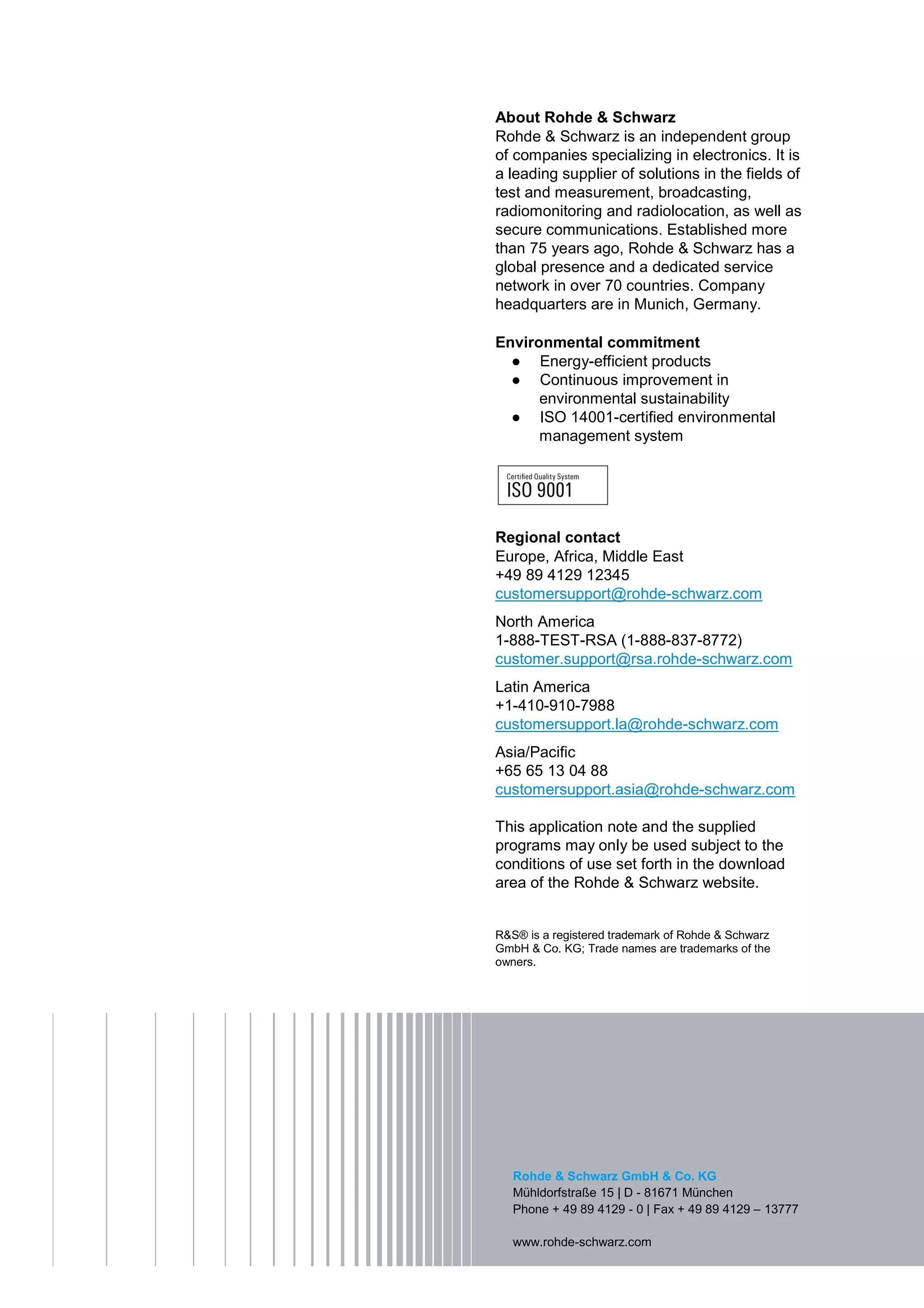The "Intermodulation Wizard" tool in the R&S ZNB vector network analyzer quickly configures the instrument for intermodulation measurements. It defines the signal sources, receiver port, measurement bandwidth, and intermodulation product orders to measure. The wizard guides the user through setting the signal frequencies and powers, and calibrating the power levels before making swept or CW intermodulation measurements.

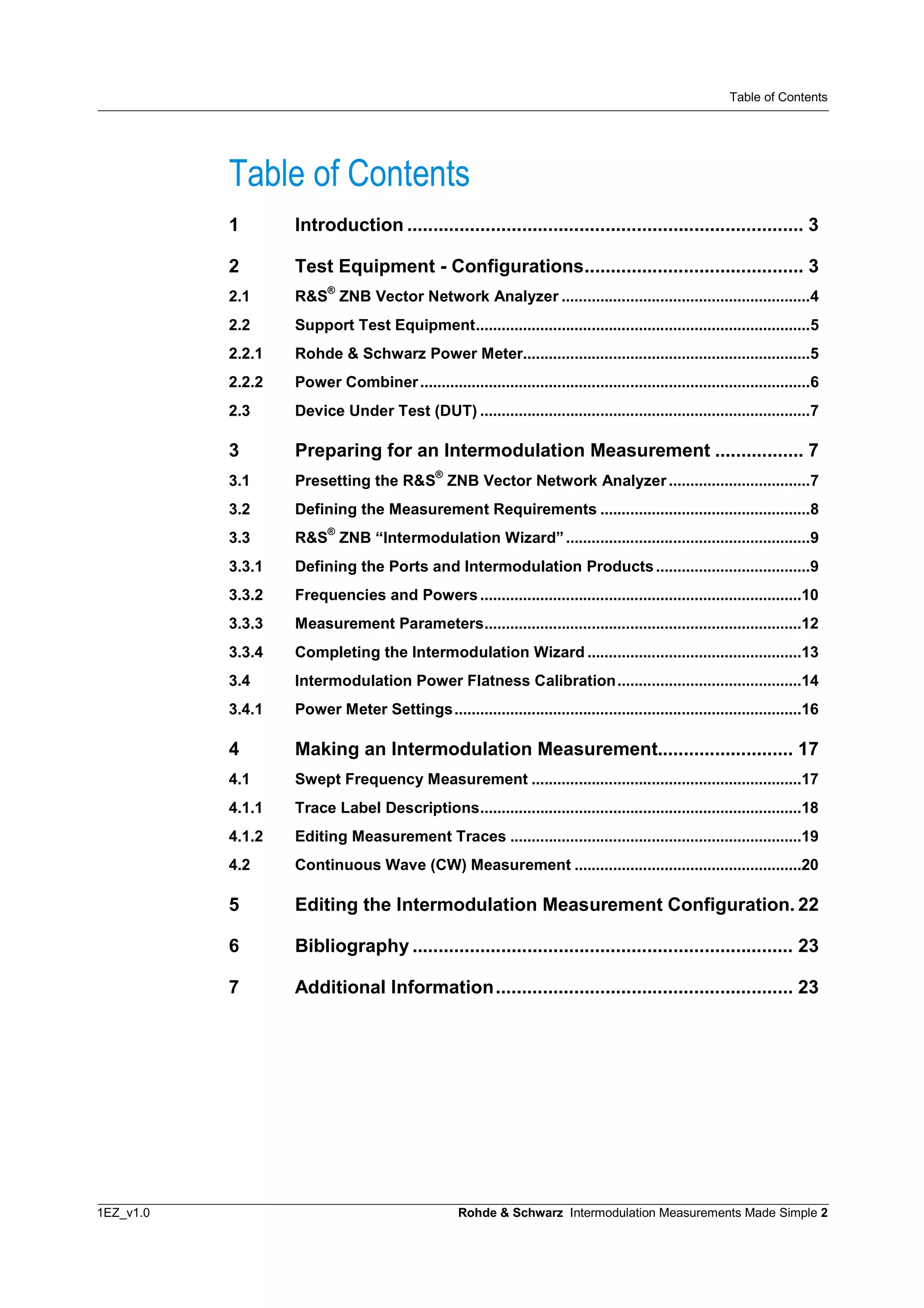
![Introduction
R&S® ZNB Vector Network Analyzer
1EZ_v1.0 Rohde & Schwarz Intermodulation Measurements Made Simple 3
1 Introduction
Measuring intermodulation products (IMP) of a non-linear RF device typically involves
three pieces of test equipment, and time to connect and calibrate multiple cable path
losses. Once the equipment is configured, the measurement is straightforward for a
simple fixed frequency two tone measurement. However, preparing for a swept
frequency response is more complex, requiring synchronization of frequency sources.
The R&S
®
ZNB vector network analyzer (VNA) is a versatile self-contained instrument
able to measure intermodulation products accurately and effortlessly provides the
following benefits:
‘Intermodulation Wizard’ tool to efficiently configure the instrument.
Faster measurements with an internal second source.
Generous linear source output power.
Excellent receiver sensitivity for detecting low level higher order products.
Excellent receiver linearity (Absolute max input, +27 dBm).
Simultaneous measurement of fixed and swept frequencies.
Straightforward power calibration.
Formatted results.
Display of calculated odd order intercept points (3
rd
, 5
th
, 7
th
and 9
th
).
In this application note, step-wise instructions are presented on how to set up the
R&S
®
ZNB VNA, leading to the successful measurement of intermodulation products.
This compliments the information given in the R&S ZNB, Vector Network Analyzers,
User Manual,
[1]
and the on-instrument “HELP”.
It is assumed that the reader is familiar with the theory and limitations caused by the
generation of intermodulation products in non-linear RF devices. Detailed information
is given in chapter 2 of R&S
®
Application Note, Intermodulation Distortion
Measurements on Modern Spectrum Analyzers, (1EF79),
[2]
available on the Rohde &
Schwarz website.
2 Test Equipment - Configurations
The measurement of intermodulation products involves the application of two RF
sources of equal power and close in frequency, that are combined into a single path
applied to a device under test (DUT). The RF output spectrum from the DUT is
analyzed for the presence of spurious frequencies caused by the non-linear behaviour
of the DUT. The source input power levels may need to be varied to observe the
intermodulation products. Once measured, this information is used to calculate the
intermodulation product intercept point, either referred to the DUT input or output.](https://image.slidesharecdn.com/b112d628-f90e-4062-a635-444e474da732-160713202939/75/Intermodulation_Measurements_Made_Simple-3-2048.jpg)
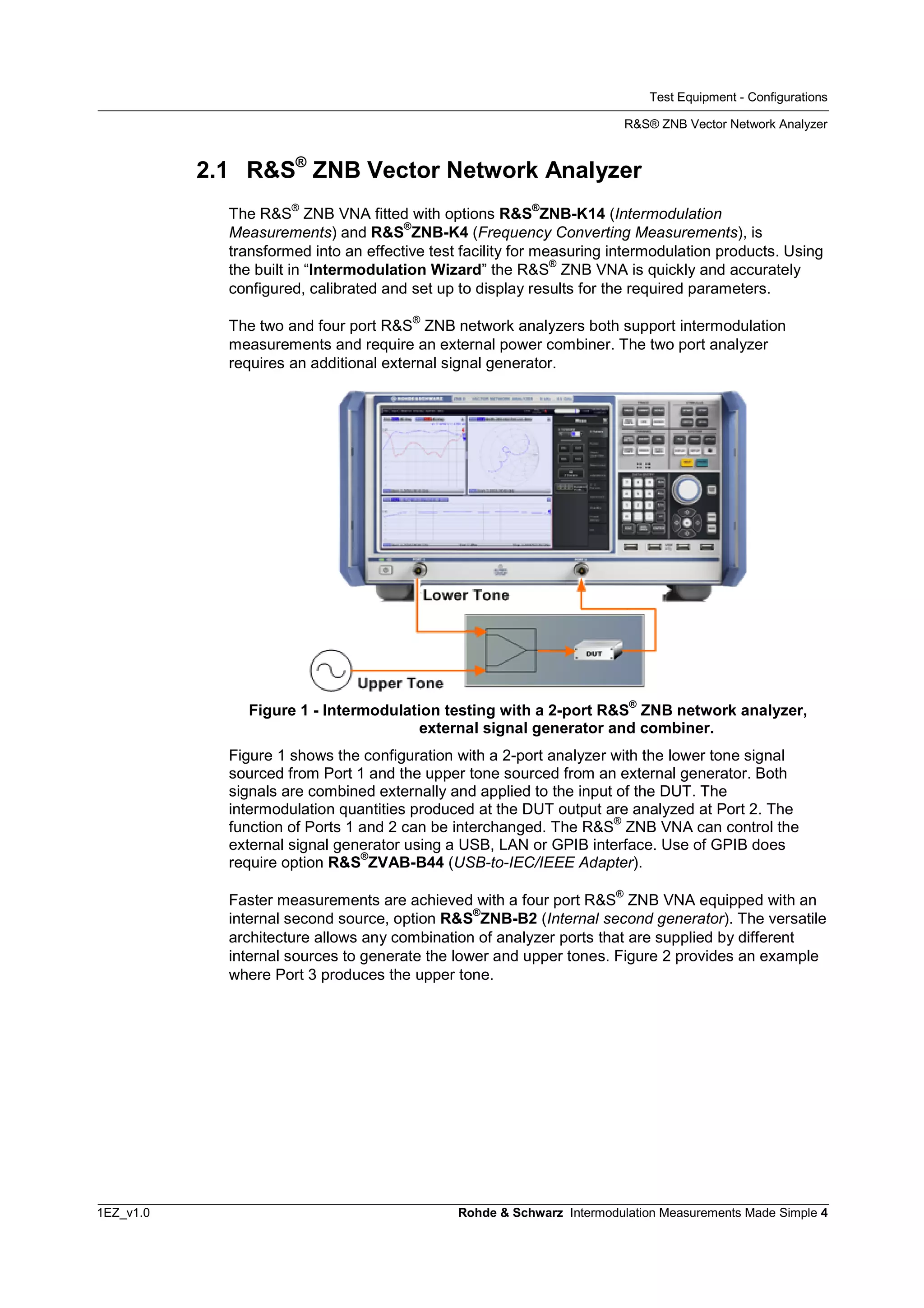
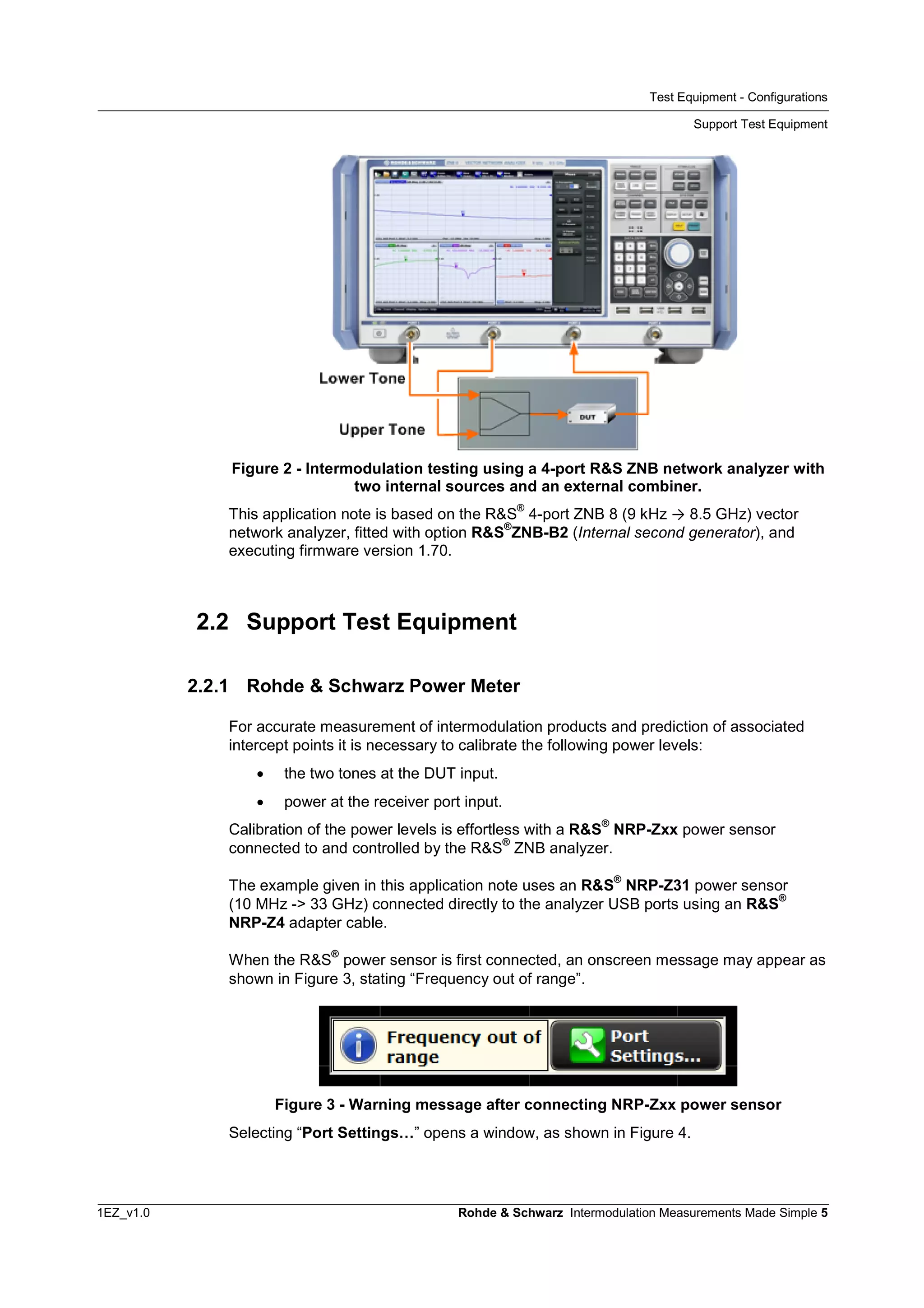
![Test Equipment - Configurations
Support Test Equipment
1EZ_v1.0 Rohde & Schwarz Intermodulation Measurements Made Simple 6
Figure 4 - Port Settings for Channel 1
In this example, the power meter has been correctly identified as being an R&S
®
NRP-
Z31, and has a minimum frequency response greater than the minimum frequency
response of the R&S
®
ZNB. Therefore, the user must ensure that the test configuration
is within the operating limits of the instruments.
2.2.2 Power Combiner
Measurement of intermodulation products requires two test tones to be combined into
a single RF path using a passive power combiner.
The choice of combiner should take into account:
Frequency
bandwidth
The operating bandwidth of the combiner must be
considerably greater than the spectrum of the
intermodulation products.
Coupling
factor
This should be kept to a minimum to reduce insertion loss
through the combiner.
Isolation The combiner must provide sufficient isolation between the
two sources (>6 dB).
In the following example, a resistive power combiner from Mini-Circuits (ZFRSC-
183+
[4]
) is used, giving typically 6.5 dB of coupling loss and isolation, from DC to 18
GHz.](https://image.slidesharecdn.com/b112d628-f90e-4062-a635-444e474da732-160713202939/75/Intermodulation_Measurements_Made_Simple-6-2048.jpg)
![Preparing for an Intermodulation Measurement
Device Under Test (DUT)
1EZ_v1.0 Rohde & Schwarz Intermodulation Measurements Made Simple 7
2.3 Device Under Test (DUT)
The RF amplifier example used in this application note is from Mini-Circuits (ZJL-
3G+
[3]
). This has the following typical characteristics:
Frequency range: 20 MHz ® 3 GHz
Gain: 19 dB
Output 1 dB compression point: +8 dBm
Output 3
rd
order intercept point: +22 dBm
3 Preparing for an Intermodulation
Measurement
3.1 Presetting the R&S®
ZNB Vector Network Analyzer
Presetting the R&S
®
ZNB network analyzer to its factory default settings will avoid the
unexpected effects of any legacy settings. Refer to the R&S ZNB, Vector Network
Analyzers, User Manual, or press the “HELP” button on the instrument front panel
keypad for more information on preset conditions.
Selection of any function on the R&S
®
ZNB VNA is designed to be simple and is
possible in at least two ways. Using “Preset” as an example:
1. Front panel keypad: “SYSTEM” key group > “PRESET”.
2. Software menu structure: “SYSTEM Preset”.
3. Software based hard key panel: “PRESET”.
The hard key panel is hidden by default, but is useful when operating the instrument
remotely. The hard key panel can be displayed using “DISPLAY View Bar Hard
Key Panel”, as shown in Figure 5.](https://image.slidesharecdn.com/b112d628-f90e-4062-a635-444e474da732-160713202939/75/Intermodulation_Measurements_Made_Simple-7-2048.jpg)
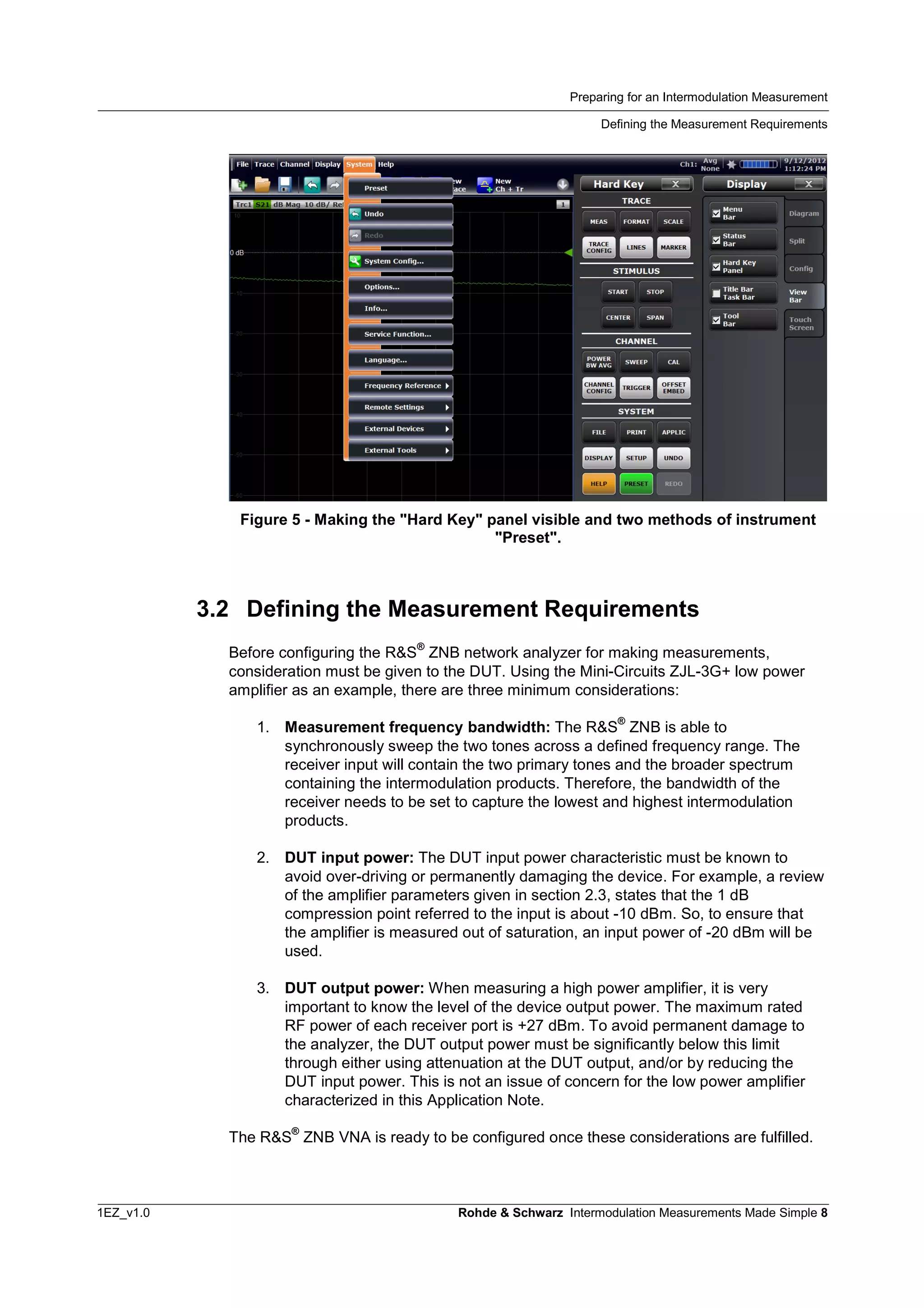
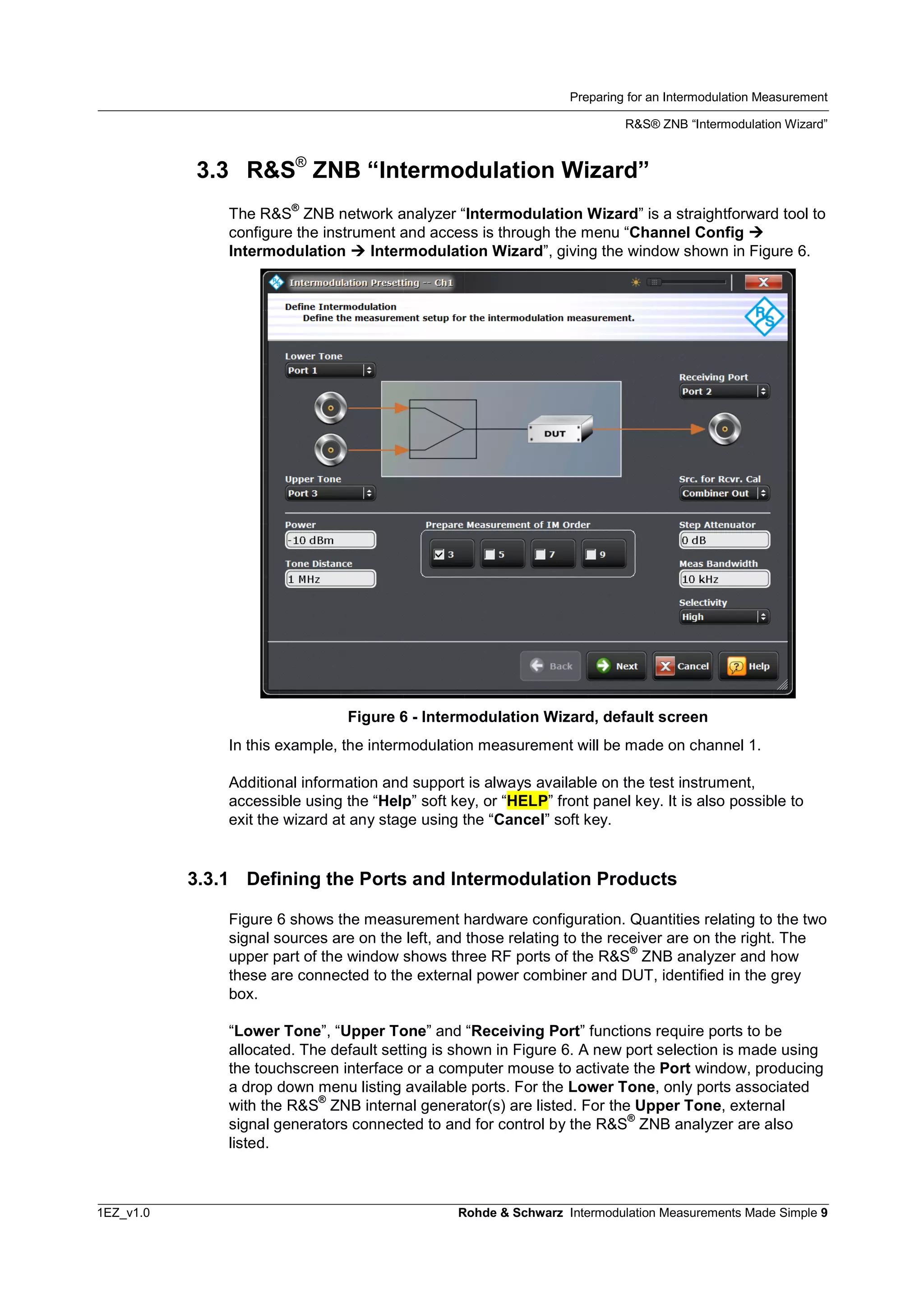
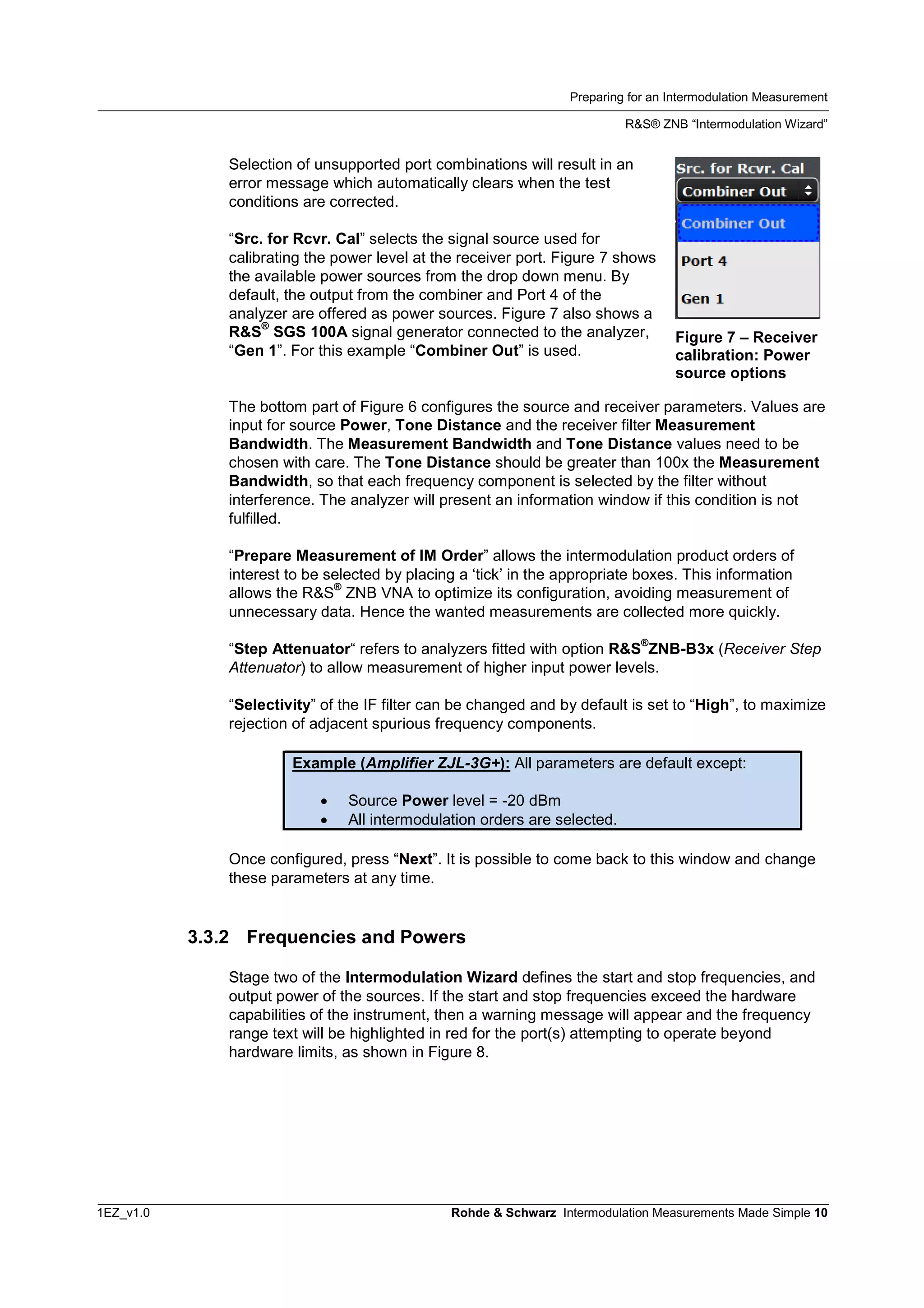
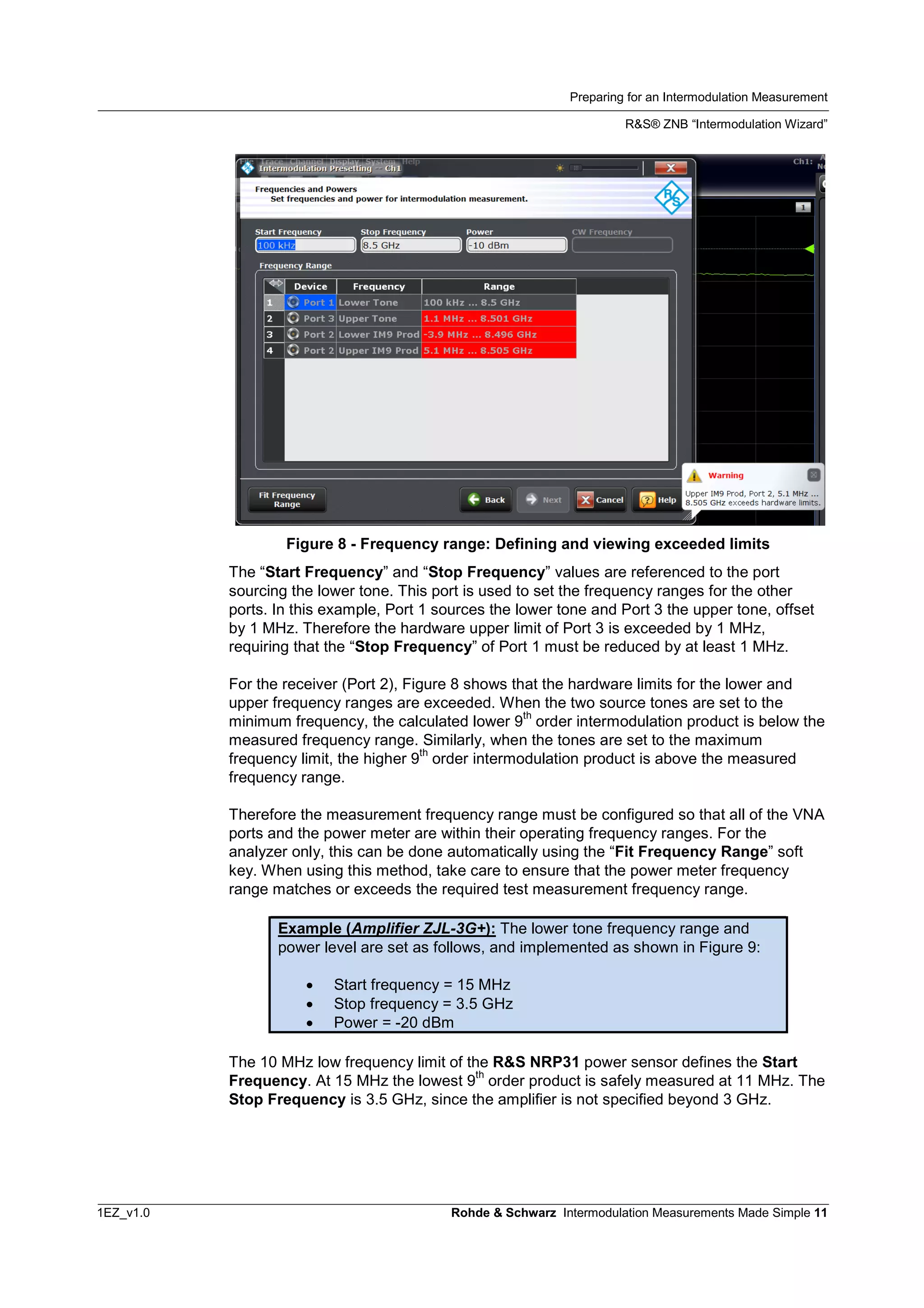
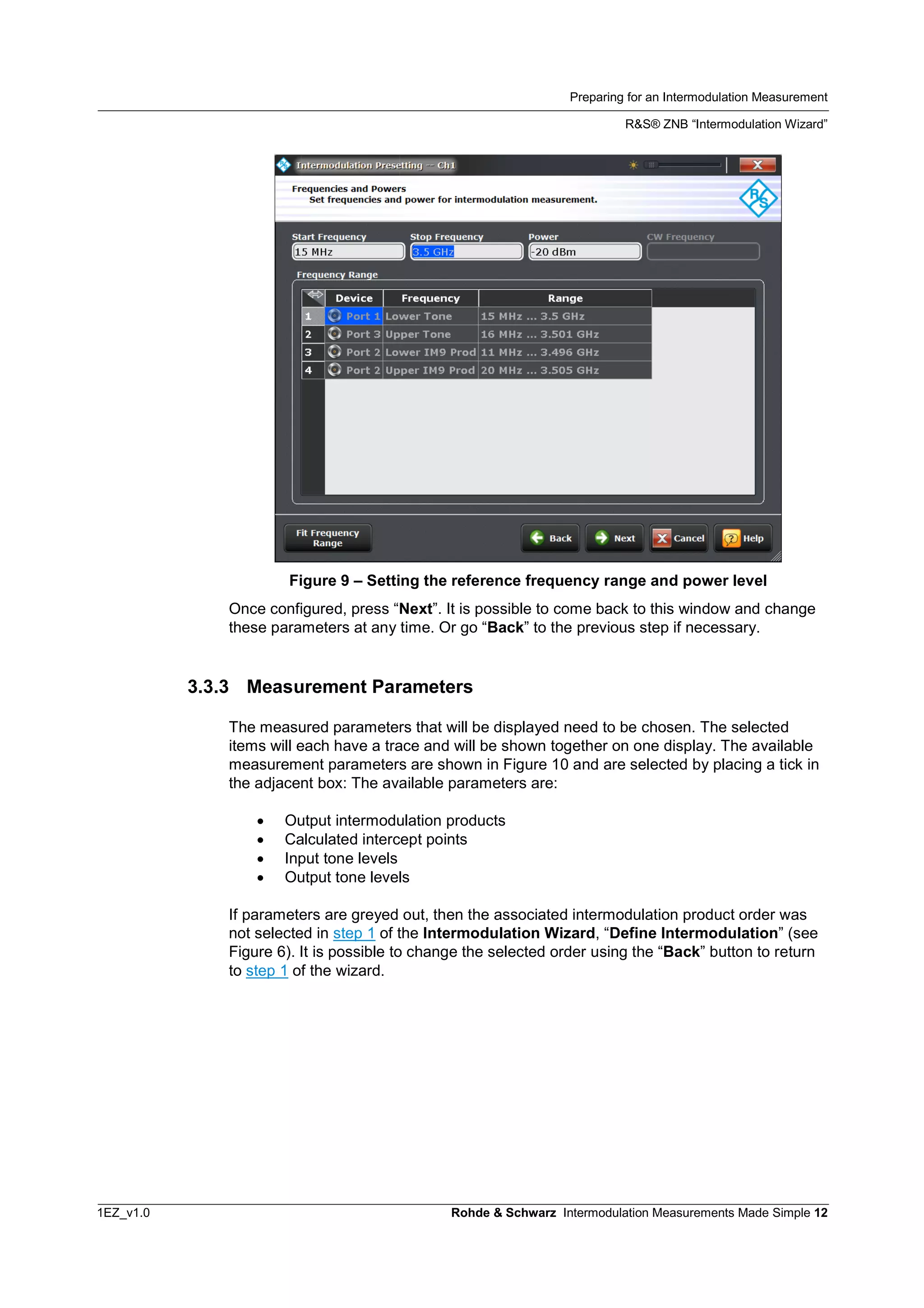
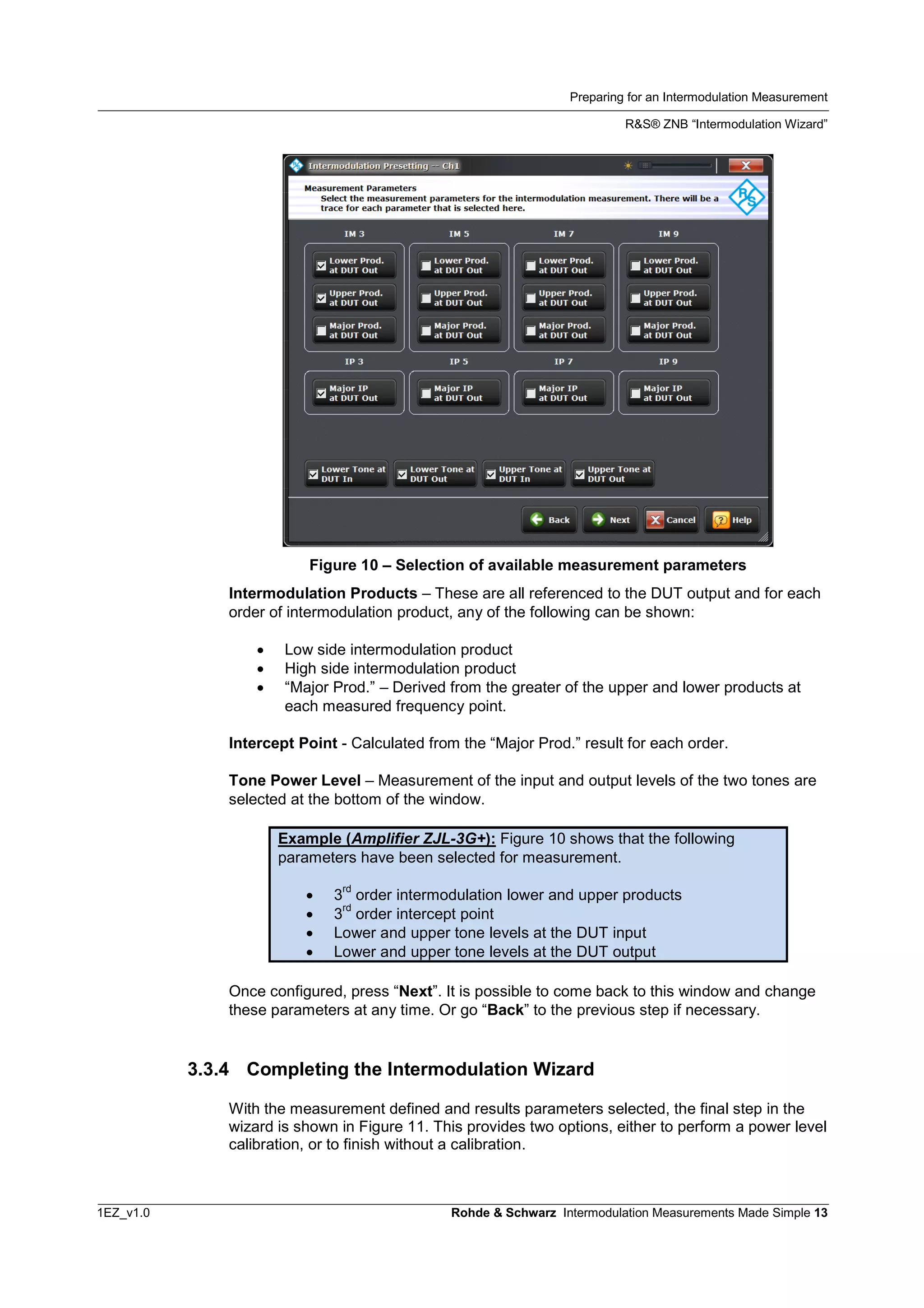
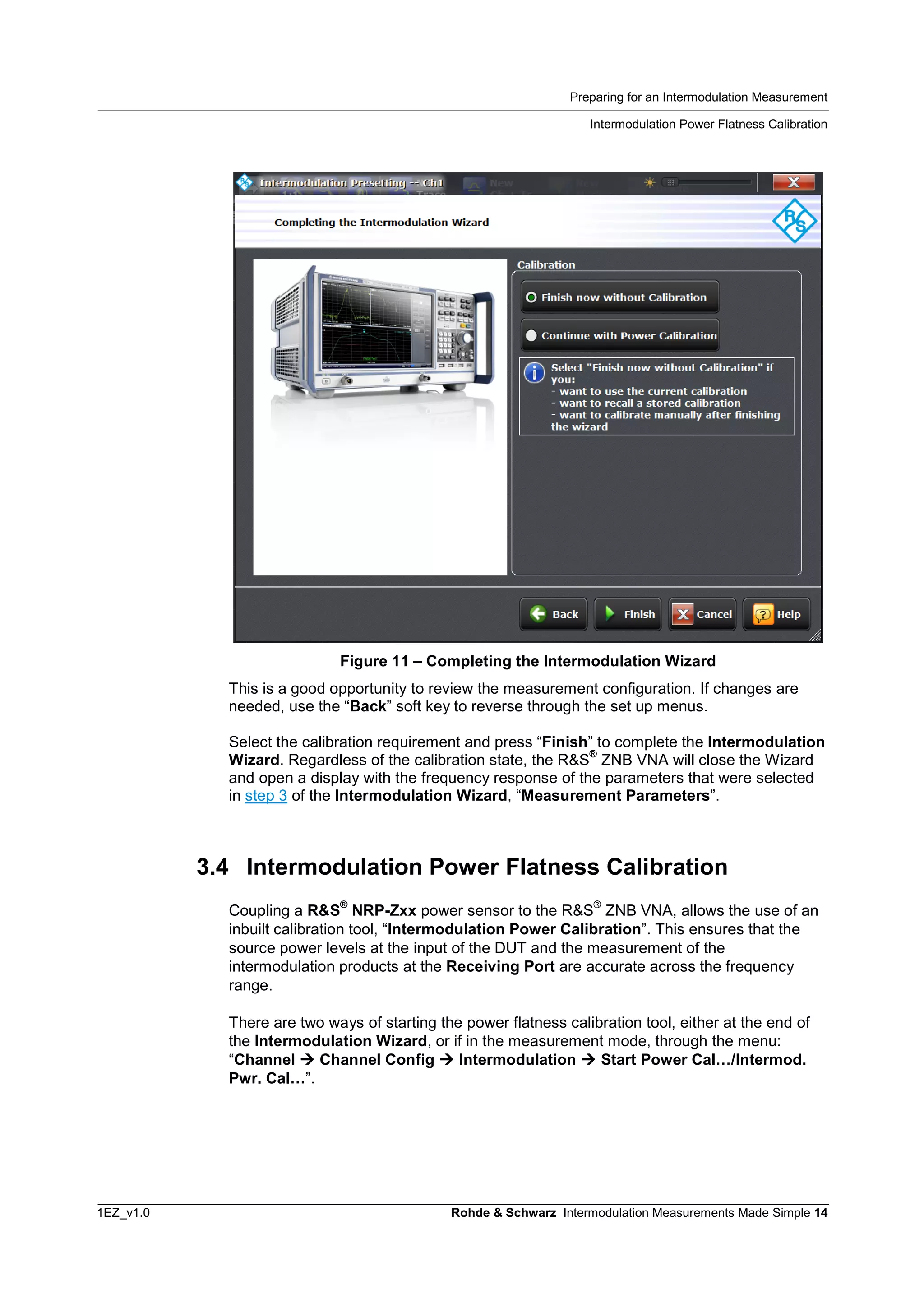
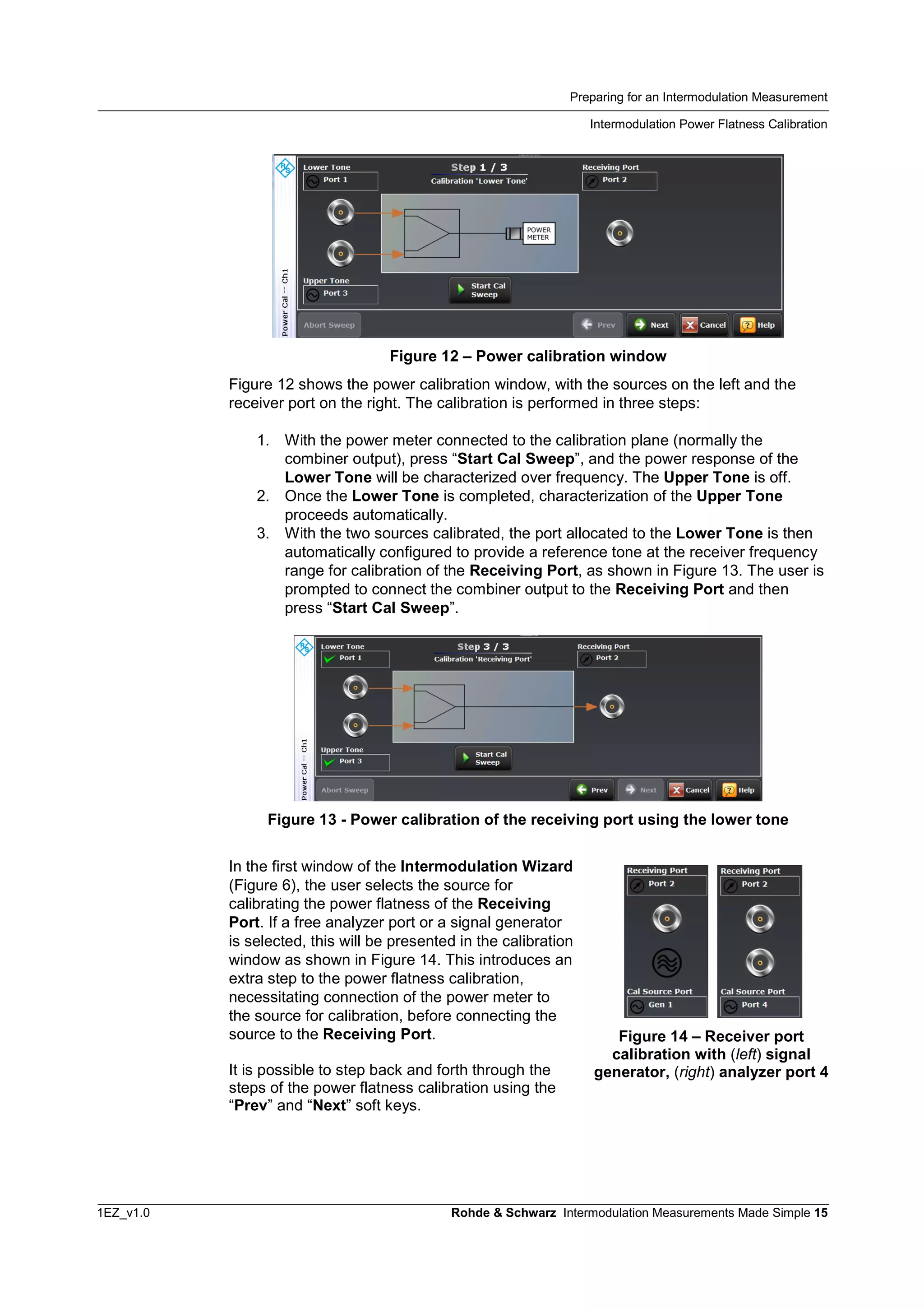
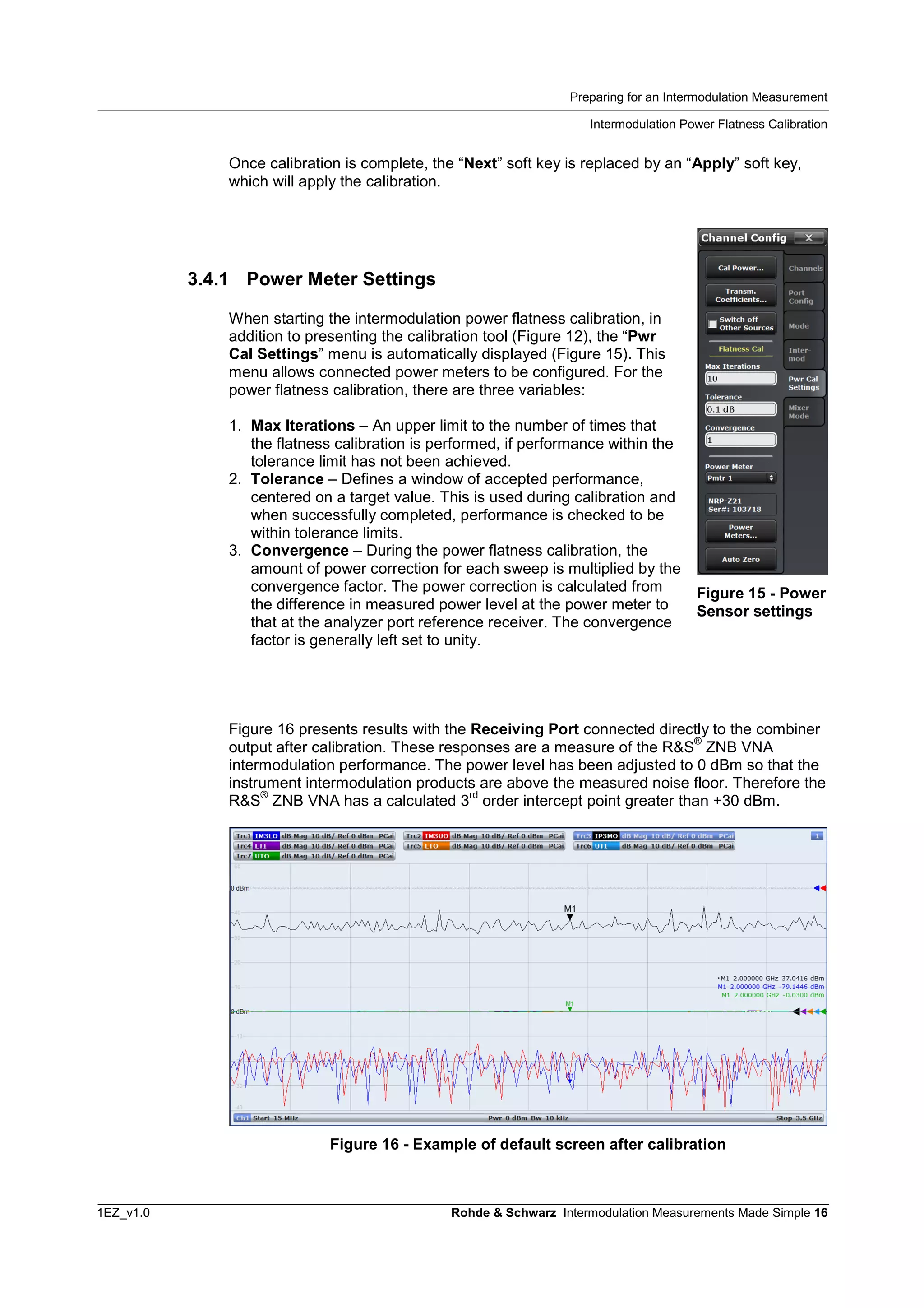
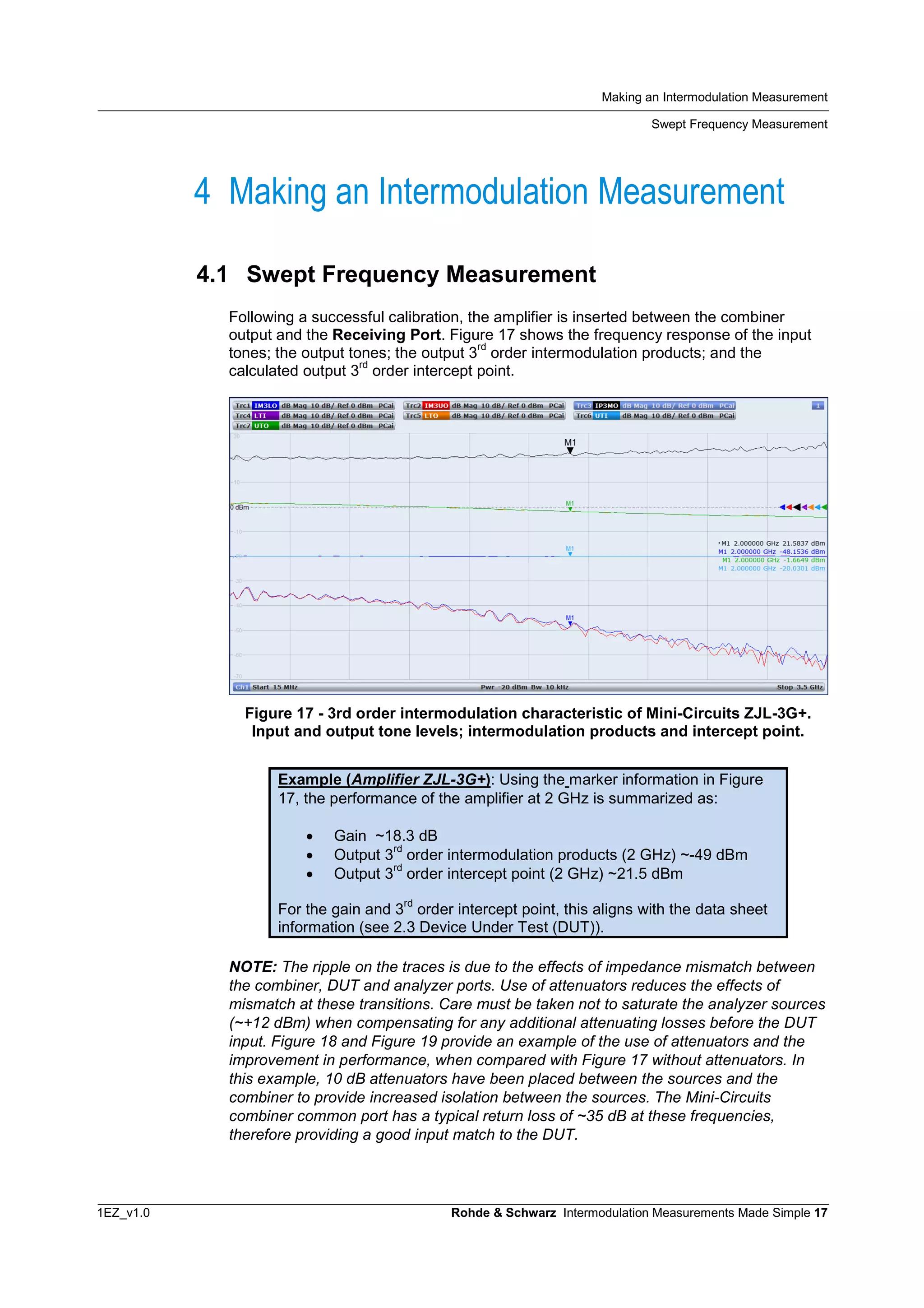
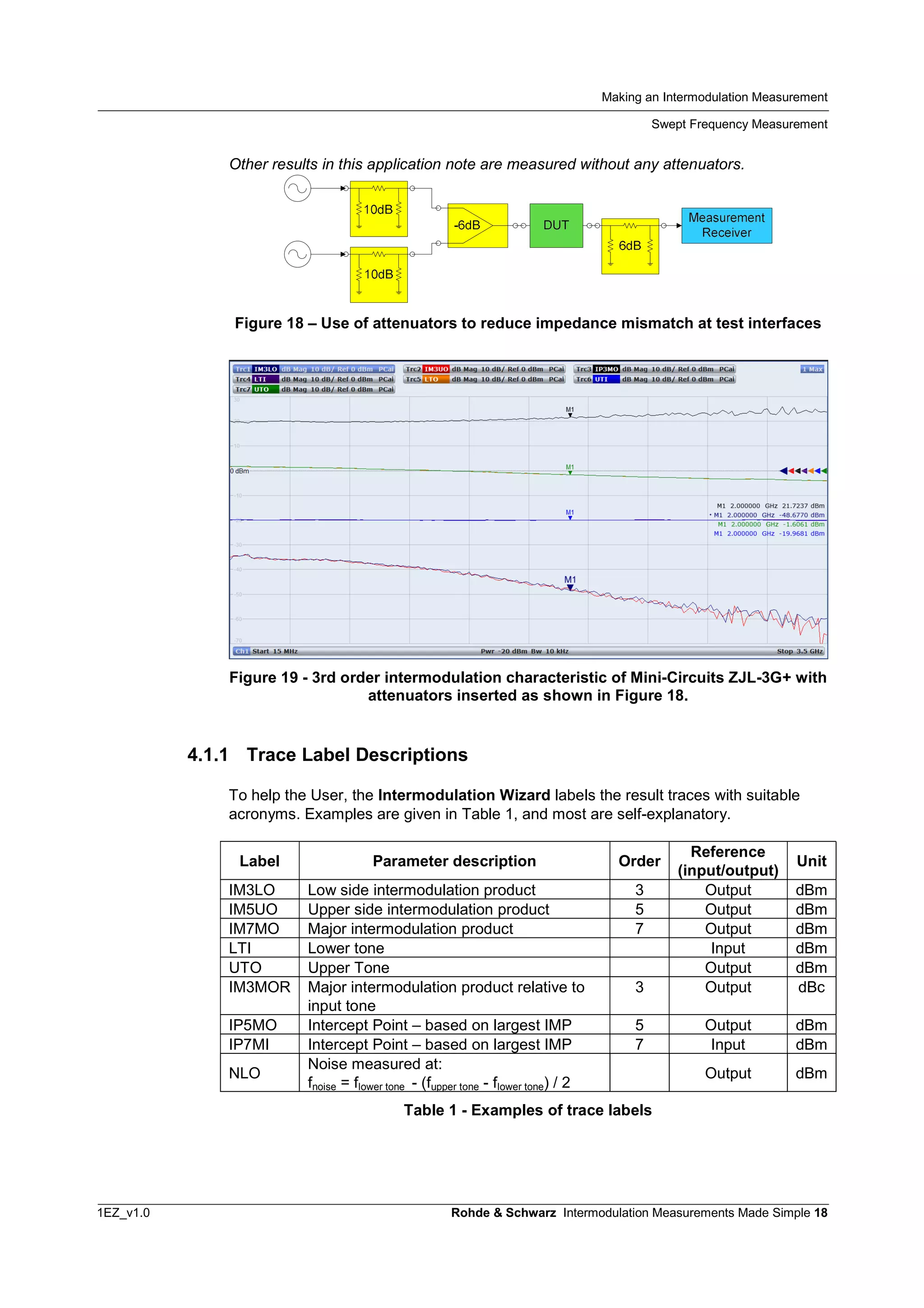
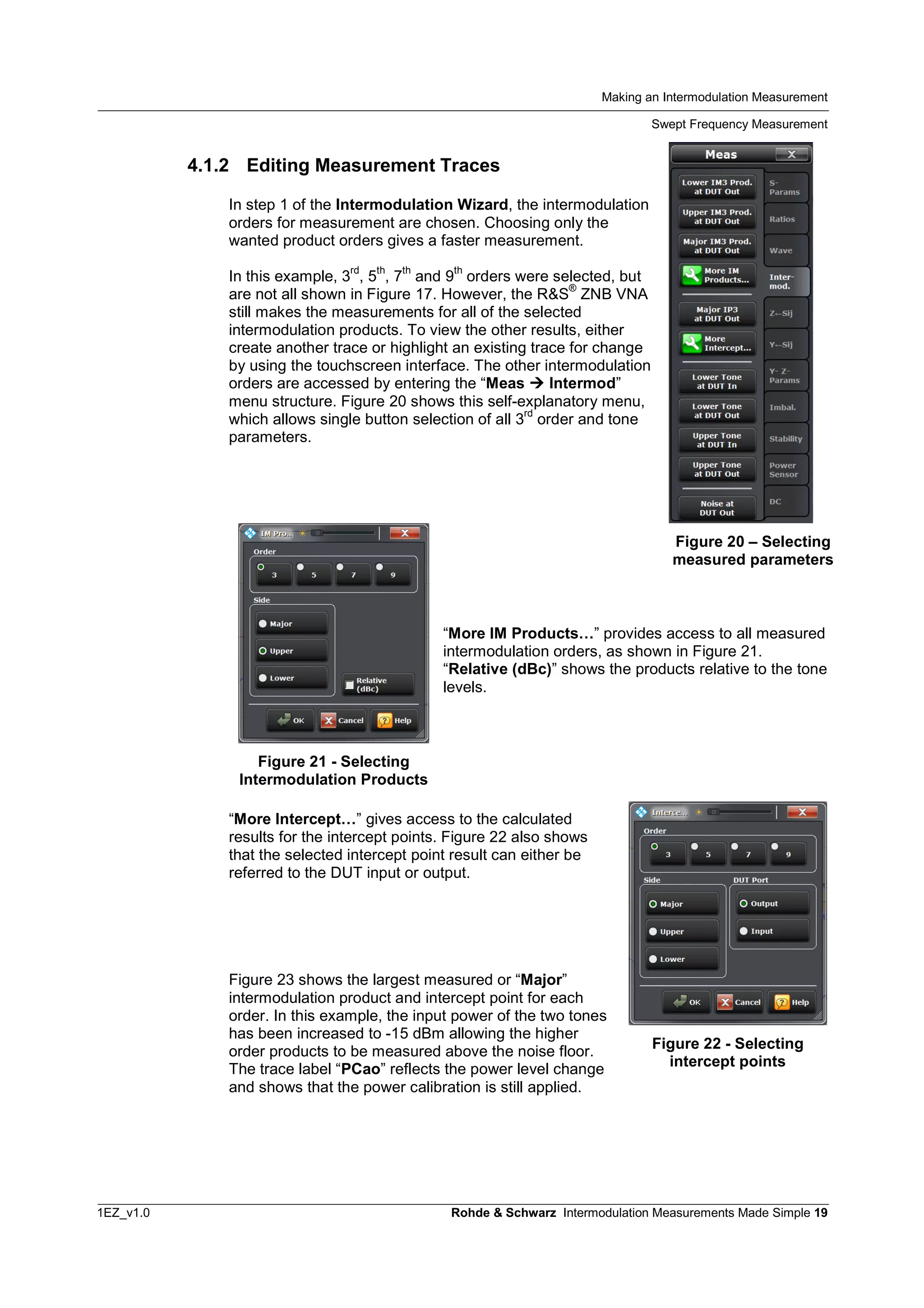

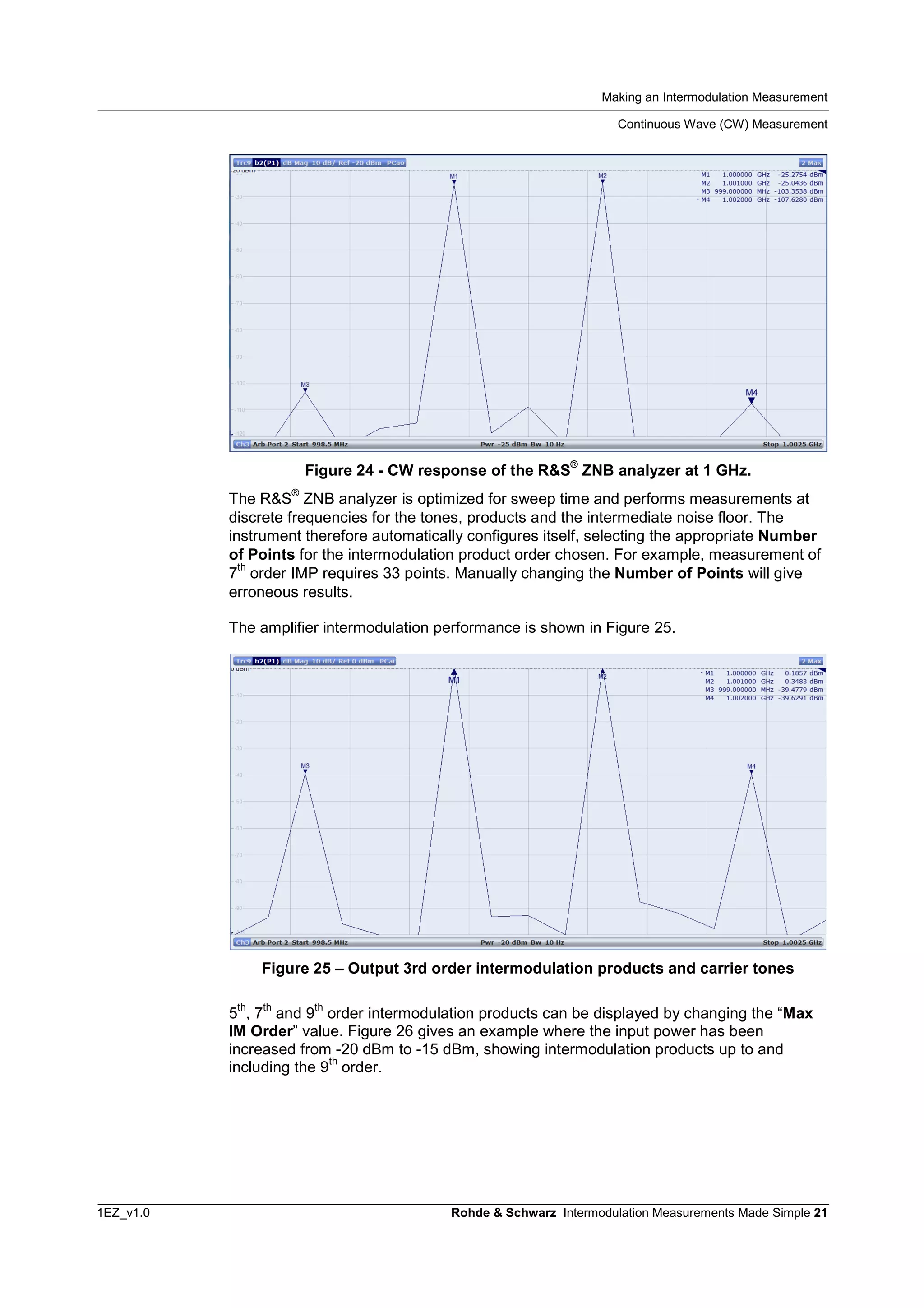
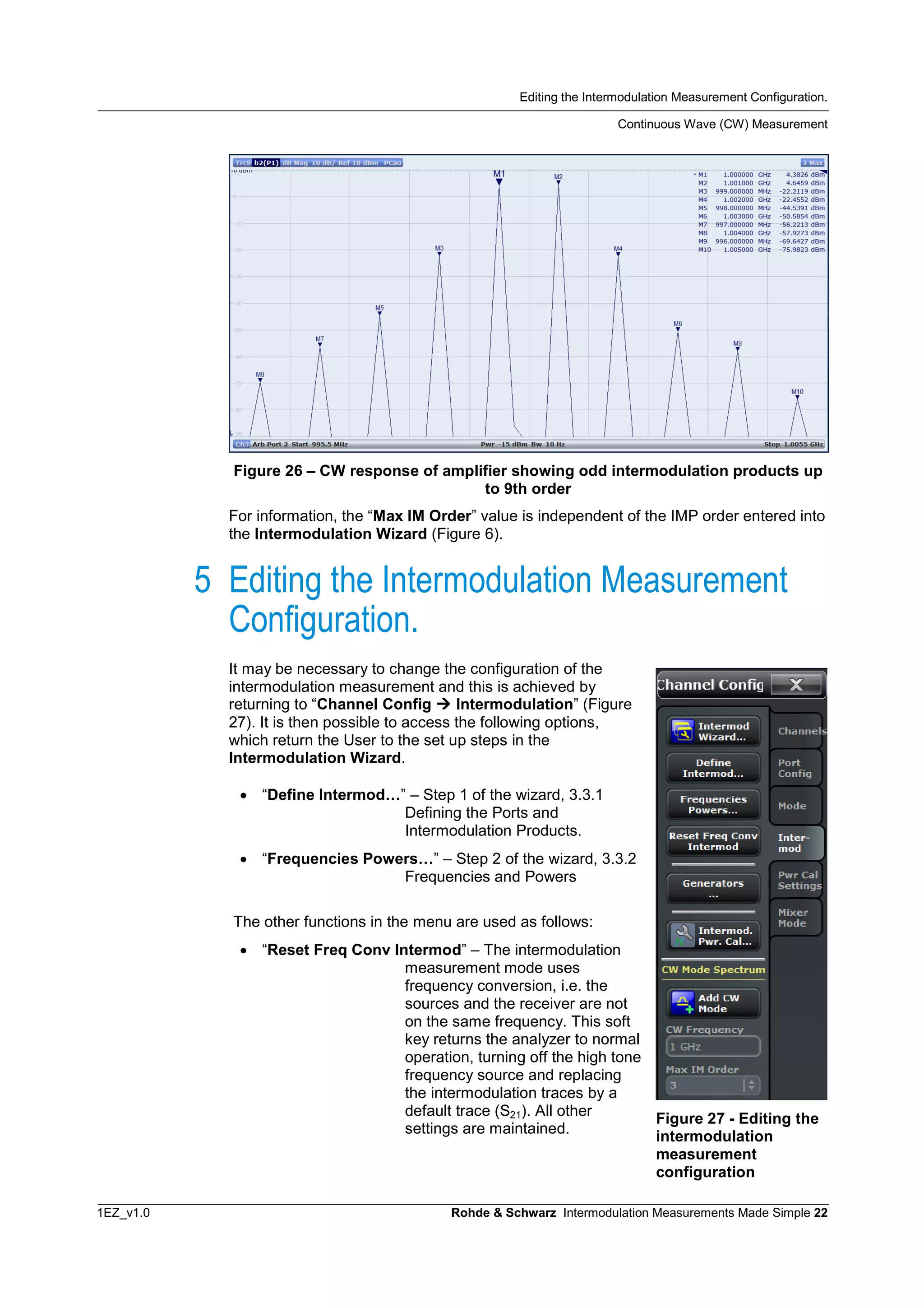
![Bibliography
Continuous Wave (CW) Measurement
1EZ_v1.0 Rohde & Schwarz Intermodulation Measurements Made Simple 23
“Generators…” - If an external generator source is to be used for calibrating the
receiver port, it is configured in this menu path. More details
are contained in the R&S ZNB, Vector Network Analyzers,
User Manual
[1]
, and the on-instrument “HELP” function.
“Intermod Pwr. Cal…” – Provides access to the intermodulation power calibration
routine. See section 3.4 Intermodulation Power Flatness
Calibration.
NOTE: CW mode uses a second channel. Performing a
repeat intermodulation calibration will give an invalid
response for the CW mode channel. Correct performance is
achieved through: 1) deletion of the CW mode channel; 2)
perform the intermodulation power calibration; and 3) create
a new CW mode channel.
6 Bibliography
[1] R&S ZNB, Vector Network Analyzers, User Manual, (1173.9163.02 12).
[2] R&S Intermodulation Distortion Measurements on Modern Spectrum Analyzers,
(1EF79).
[3] Mini-Circuits ZJL-3G+ Low Power Coaxial Amplifier Data Sheet.
[4] Mini-Circuits ZFRSC-183-S+ Power Splitter/ Combiner Data Sheet
7 Additional Information
This Application Note is subject to change without notice. Please visit the
website http://www.rohde-schwarz.com to download the latest versions.
Please send any comments or suggestions about this application note
to TM-Applications@rohde-schwarz.com.](https://image.slidesharecdn.com/b112d628-f90e-4062-a635-444e474da732-160713202939/75/Intermodulation_Measurements_Made_Simple-23-2048.jpg)
